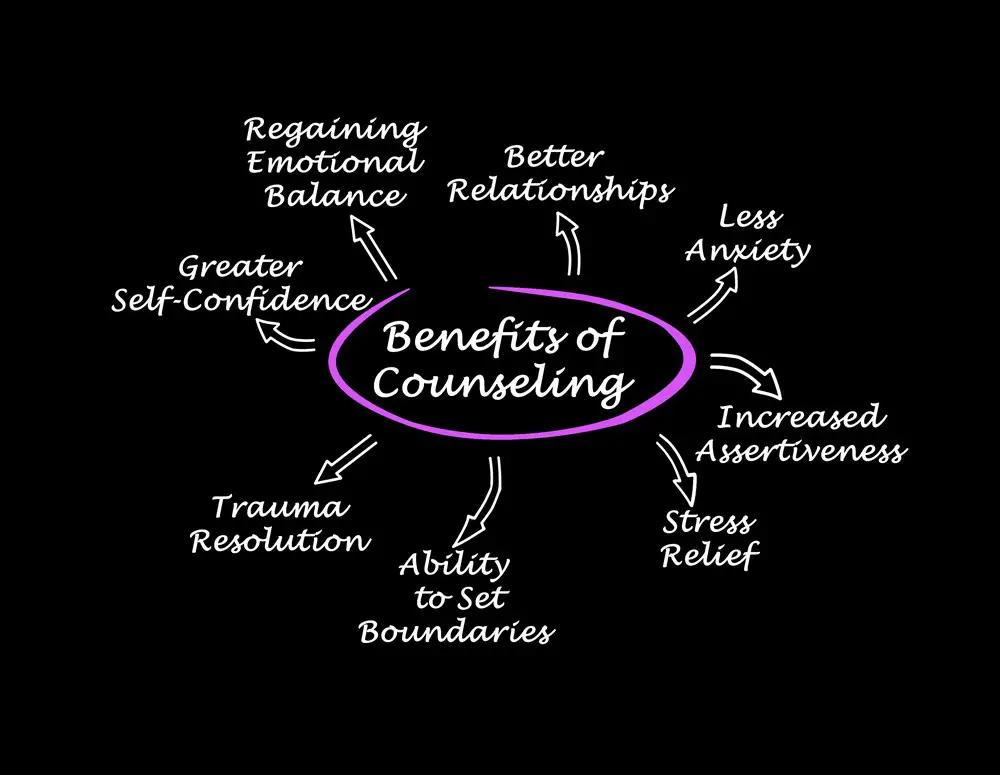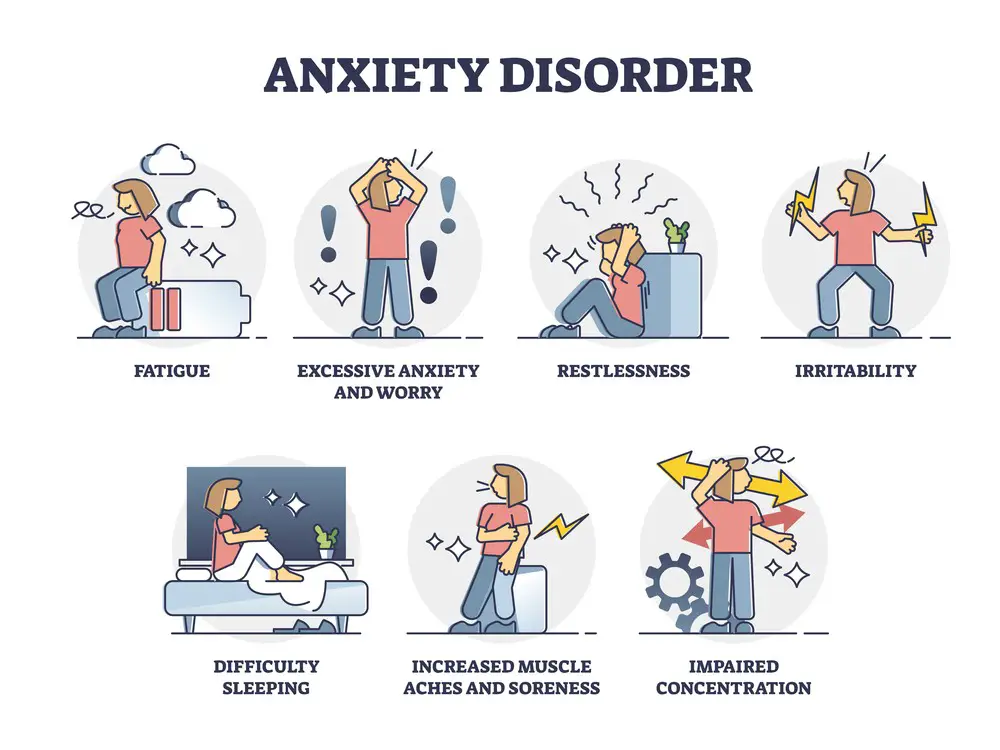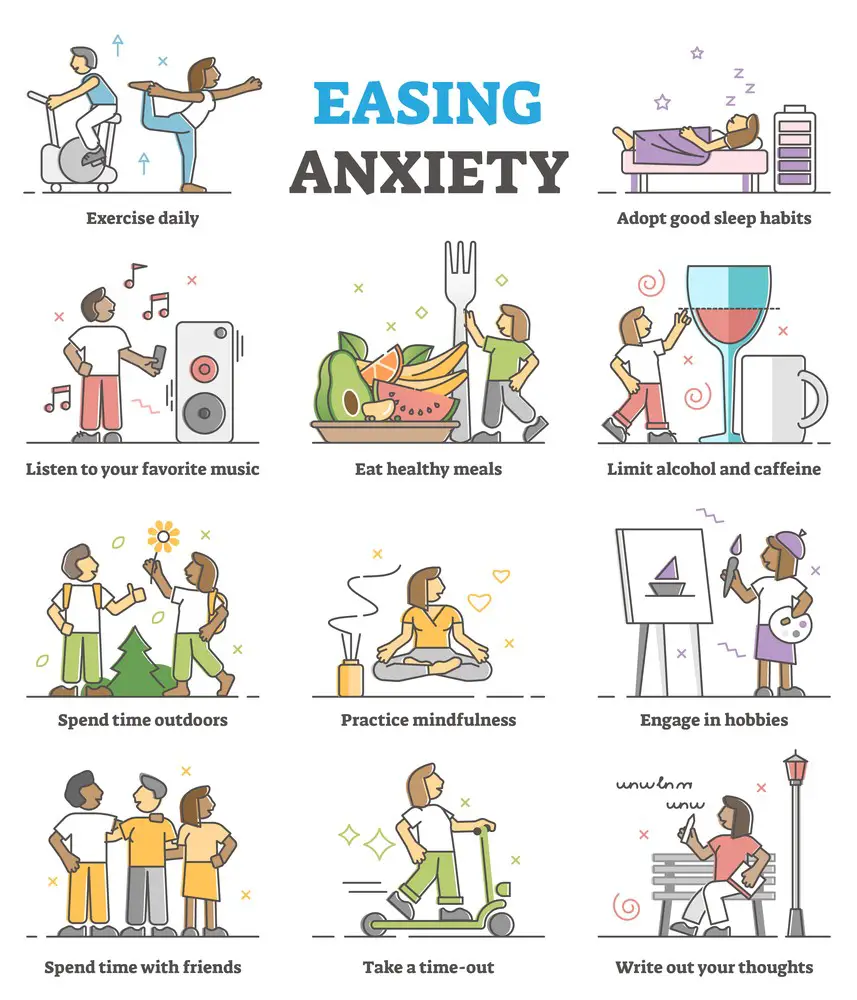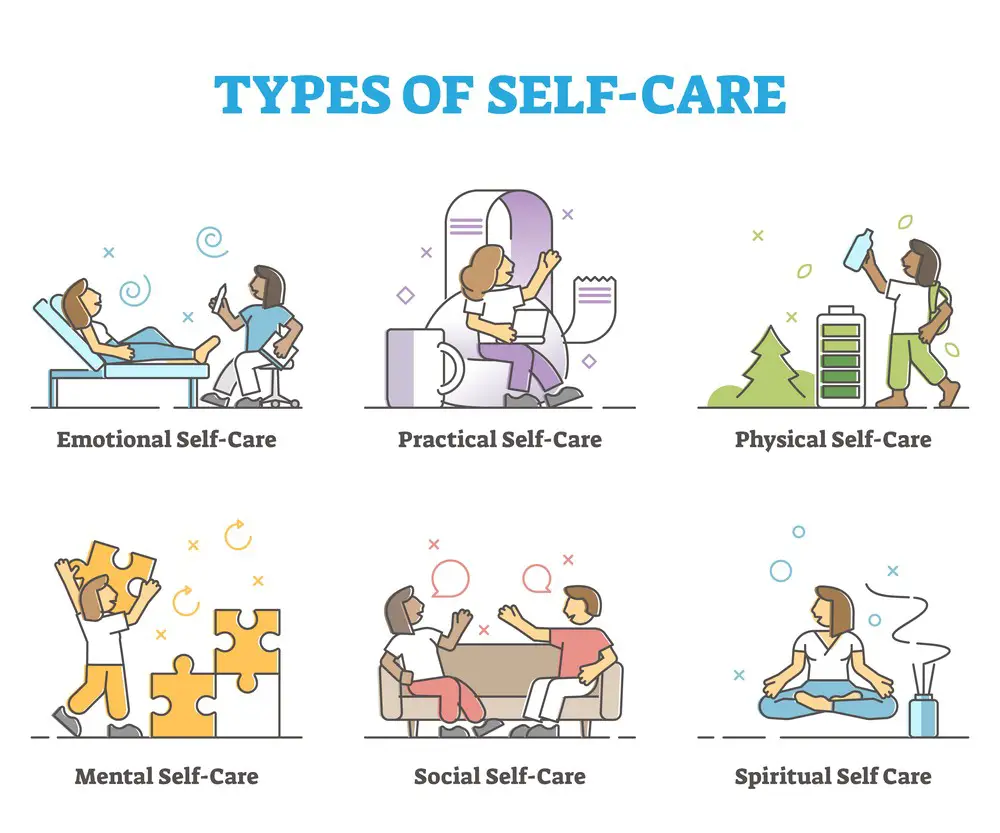Recovering from anxiety is a process that unfolds differently for everyone, but there are common signs indicating progress. It’s a personal journey that often involves learning how to manage symptoms, understand your triggers, and develop coping strategies. As you begin to notice changes in your mental health, it can be incredibly affirming and encouraging. Recognizing these signs of recovery can help sustain momentum on your path to improved well-being.
One of the clear indicators that you’re recovering from anxiety is a gradually increasing sense of control over your emotions and reactions. You might find yourself handling situations that would have previously caused distress or panic with a newfound calmness. Additionally, there’s often a shift in perspective, where worries may not dominate your thoughts as much, and there’s an increased ability to stay present and focused on the moment. Physical symptoms, like a racing heart or restlessness, may begin to subside, and you might experience a more consistent state of relaxation.
Improvements in relationships and daily functioning are also telling signs. You may notice that you’re more open to social engagements and find greater ease in navigating interactions without overwhelming anxiety. Sleep patterns often normalize, and there’s a general increase in energy and motivation to engage in activities you enjoy. These positive changes reflect the hard work you’ve put into managing your anxiety and the result of finding and applying strategies that work for you.
Key Takeaways
- Recognizing signs of recovery can help maintain momentum toward better mental health.
- Common progress indicators include a growing sense of control and a shift in perspectives.
- Positive changes in social interactions and daily activities show significant strides in recovery.
 Understanding Anxiety
Understanding Anxiety
When you’re grappling with feelings of anxiety, it’s crucial to recognize the signals and understand the conditions behind them. Let’s take a step toward identifying what you’re dealing with.
Identifying Anxiety Symptoms
Anxiety typically manifests through various psychological and physical symptoms. Here, your body is sounding the alarm to a perceived danger, and this ‘fight or flight’ reflex can exhibit in many forms:
- Physical Symptoms: Rapid heartbeat, sweating, trembling, or an upset stomach can all show your body is under stress.
- Psychological Symptoms: Constant worry, difficulty concentrating, and a feeling of impending doom signals your mind is preoccupied with anxious thoughts.
Anxiety Disorders Explained
Anxiety disorders are more than just temporary worry or fear. They’re a group of mental health disorders that can cause persistent and overwhelming anxiety and fear. Your health can be significantly affected, as these disorders can disrupt your daily activities and may require professional treatment. Here’s a quick overview of different anxiety disorders:
- Panic Disorder: Sudden feelings of terror often striking without warning. This includes Panic Attacks marked by a fear of disaster or of losing control even when there’s no real danger.
- Obsessive-Compulsive Disorder (OCD): Unwanted recurring thoughts (obsessions) and behaviors (compulsions) that you feel the urge to repeat over and over.
- Phobias: Intense, irrational fears of specific situations or objects that aren’t dangerous, such as heights or flying.
The causes of anxiety disorders are complex: a combination of genetic, environmental, psychological, and developmental factors is typically involved. Remember, identifying your symptoms is the first step in managing anxiety, and knowing the type of disorder assists in seeking the proper treatment.
 Symptoms of Recovery
Symptoms of Recovery
As you embark on overcoming anxiety, signs will affirm you’re heading in the right direction. Recognizing these will bolster your resolve and show you that your efforts are bearing fruit.
Positive Changes in Thought Patterns
Key Takeaway: You’re starting to see the glass half full, and the world seems a bit brighter.
- Less Catastrophic Thinking: Your mind is no longer your worst critic. Whereas you might have expected the worst before, now you notice thoughts like, “Maybe it’s not that bad after all.”
- Increased Awareness: You catch negative thoughts more swiftly, pivot to the positive, and pat yourself on the back.
Reduction of Physical Symptoms
Key Takeaway: Your body is waving the white flag of peace as physical symptoms start to subside.
- Steadier Breathing: That tightness in your chest? It loosens its grip, allowing you to breathe deeply and calmly.
- Reduced Muscle Tension: Your shoulders drop, and your jaw unclenches. It’s like your muscles are sighing in relief.
Improvement in Daily Functioning
Key Takeaway: You’re reclaiming the reins of your daily life with enthusiasm and grace.
- Better Sleep: Nights are no longer battlegrounds; you welcome sleep like an old friend.
- Boosted Energy for Tasks: You tackle your to-do list with an energy that seemed like a distant memory not too long ago.
- Enhanced Calm in Activities: Whether shopping or socializing, the storm inside quiets, allowing you to enjoy the moment.
Treatment and Management
When it comes to bouncing back from anxiety, treatment, and management are your trusty sidekicks. These tools help you regain control and teach your mind to approach life’s ups and downs with a steadier hand.
 Professional Interventions
Professional Interventions
A mental health professional is your go-to guide for a customized treatment plan. They have the know-how to match your needs with the right interventions.
- Consultation: Schedule sessions with a therapist who can offer a diagnosis and outline a treatment strategy.
- Cognitive Behavioral Therapy (CBT): Get to grips with CBT, which teaches you to recognize and reframe negative thought patterns.
Key takeaway: Seeking professional help is the cornerstone of a solid anxiety recovery plan.
Medication and Therapy
Sometimes, therapy joins forces with medication to pack a one-two punch against anxiety.
- Medication Options: Understand that various medications, like antidepressants or anxiolytics, might be recommended to ease your symptoms.
- Combination Therapy: Know that combining these meds with talk therapy can enhance your recovery journey.
Key takeaway: Medication can be a helpful ally, but it’s often most effective when coupled with therapy.
Coping Mechanisms and Skills
Empower yourself by learning strategies to manage anxiety in the moment.
- Relaxation Techniques: Deep breathing, mindfulness, or progressive muscle relaxation can soothe your nervous system.
- Building a Support System: Lean on friends and family, or connect with support groups to surround yourself with understanding and encouragement.
Key takeaway: Mastering coping skills gives you a sense of agency in handling your anxiety.
Personal Strategies for Recovery
It’s empowering to know that your journey toward overcoming anxiety can be aided by personal strategies tailored to fit your lifestyle. These approaches encompass lifestyle modifications, building a supportive community, and engaging in mindfulness practices.
 Lifestyle Changes
Lifestyle Changes
Adopting healthier habits plays a crucial role in managing anxiety. Here’s what you can do:
- Exercise Regularly: Most days, aim for at least 30 minutes of physical activity. Activities like walking, running, or swimming can boost mood and reduce anxiety symptoms.
- Balanced Diet: Prioritize a diet rich in fruits, vegetables, lean protein, and whole grains to maintain stable energy levels and mood.
- Adequate Sleep: Strive for 7-9 hours of quality sleep nightly. Establish a relaxing bedtime routine to improve sleep quality.
Key Takeaway: Small, consistent lifestyle adjustments can significantly impact mental health.
Developing a Support Network
You don’t have to face anxiety alone. Cultivate connections:
- Talk About Your Feelings: Share your experiences with friends or family members you trust.
- Professional Support: Therapists or counselors specialize in anxiety management and can offer valuable guidance.
- Support Groups: Joining a group provides the opportunity to meet others with similar experiences, which can enhance feelings of belonging and reduce isolation.
Key Takeaway: A strong support network can provide both comfort and practical strategies for coping with anxiety.
Mindfulness and Relaxation
Mindfulness and relaxation techniques can help calm your mind and reduce stress:
- Meditation: Dedicate time daily to meditation, starting with short sessions and gradually increasing as you become more comfortable.
- Yoga: Incorporate yoga into your routine to help unite body and mind through gentle movement and breathing exercises.
- Visualization Techniques: Practice imagining serene scenes or positive outcomes to manage stress and anxiety.
Key Takeaway: Regular practice of mindfulness and relaxation techniques can offer a sense of peace and control in managing anxiety.
Navigating Relationships
Navigating relationships can be a true testament to your progress in recovering from anxiety. When you start communicating more effectively with loved ones and building a strong support group, these are clear indicators that you’re moving toward better mental health.
Communicating with Loved Ones
- Recognizing Emotions: Understanding and expressing your emotions clearly.
- Tip: Use “I feel” statements to convey your emotions without placing blame.
- Reducing Worrying: Less fear of judgment from loved ones when sharing your thoughts.
- Strategy: Rehearse what you want to say to diminish anxiety.
Key Takeaway: Improved communication helps you express your emotions better.
Building a Reliable Support Group
- Finding Energy to Socialize: Notice an increase in wanting to spend time with friends.
- List:
- Start with small gatherings.
- Gradually increase social interactions.
- List:
- Creating a Circle of Trust: Surround yourself with people who understand your journey.
- Steps:
- Reach out to empathy-driven individuals.
- Invite them to be a part of your regular support.
- Steps:
Key Takeaway: A strong support group provides a safety net, giving you confidence.
Facing Triggers and Stressors
When you’re on the road to recovery from anxiety, learning to face your triggers and stressors can be a turning point. Find strength in knowing what sets off your worries and building your resilience to stress.
Identifying and Understanding Triggers
Triggers can sneak up on you; they could be a memory, an event, or even a simple object that links back to a trauma or intense stress. Your job is to:
- Spot the Trigger: Keep a diary to record when anxiety spikes. This can help you connect the dots back to the source.
- Analyze Your Feelings: Ask yourself what exactly you’re feeling when a trigger occurs. Is it fear, sadness, or a racing heart?
Key Takeaway: Knowing your triggers empowers you to anticipate and manage reactions to them.
Developing Resilience Against Stress
Resilience is your mental armor against daily life’s stressors. To fortify it, consider:
- Adopting Stress Reducers: Practices like deep breathing, meditation, or exercise can be effective shields.
- Progressive Exposure: Gradually facing what scares you in small, controlled doses can reduce the power it holds over you.
Key Takeaway: Building resilience helps you bounce back from stress more quickly and easily.
Maintaining Physical Health
Recovering from anxiety often entails a holistic approach, and tending to your physical health plays a crucial role in this process.
Importance of Physical Activity
Be Active: Regular exercise is a cornerstone of physical health. It’s proven that being physically active boosts your energy levels and helps relieve anxiety. Integrating simple activities like walking or cycling into your daily routine contributes significantly to your recovery.
- Strategies to Incorporate Exercise:
- Schedule short walks during your breaks.
- Choose stairs over elevators when possible.
- Engage in a fun sport or fitness class.
Key Takeaway: Be energetic and lively through consistent, enjoyable physical activities.
Nutritional Considerations
Fuel Your Body Right: A balanced diet abundant in vegetables, fruits, and whole grains is vital for maintaining your physical health. These foods provide the nutrients needed to support your body’s recovery from anxiety.
- Tips for Balanced Eating:
- Include a variety of vegetables and fruits in every meal.
- Opt for whole grains over refined products.
Key Takeaway: Your plate is your palette; paint it with the vibrant colors of healthy food to support your well-being.
Recognizing Personal Growth
Recovery is a journey where recognizing your milestones is critical. It helps you acknowledge your progress and bolsters your mental health.
Embracing a Positive Outlook
- Understand it starts with you: Your perception shapes your reality. Even when life throws challenges, noticing the silver lining is a sign of a robust positive outlook.
- Celebrate small victories: Each day, find moments you’re grateful for, even if they’re as simple as a pleasant interaction or a sunny morning.
- Key Takeaway: Cultivating positivity is like planting seeds in a garden; with care, it will blossom into a resilient, optimistic mindset.
Acknowledging Healing Process
- Heal at your own pace: Healing isn’t a race. Some days, you’ll leap forward; others are about patience and self-compassion.
- Learning from the past: You’re not letting mistakes define you but using them as stepping stones. Acknowledging that you’re learning is a clear sign of healing.
- Key Takeaway: Recognizing that you’re on a path to recovery, with its twists and turns, means valuing your personal growth and dedication to your mental health.
Preventing Relapse
Making sure you stay on track with your recovery from anxiety is like keeping a boat steady in calm waters. It means being on the lookout for any signs of a storm and having your safety measures ready.
Identifying Early Warning Signs
Catch those sneaky hints that anxiety might be creeping back. Just like a weather forecast, your ability to recognize these early warning signs can save you from a downpour.
- Mood Shifts: You might notice small changes in your mood. If you’re feeling more irritable, down, or worried without a clear reason, these could be your early signs.
- Physical Symptoms: Pay attention to your body. Are there unusual aches or increased heartbeats when you’re not exerting yourself? These can also signal a return of anxiety.
Key Takeaway: Spotting these hints early on gives you the power to act swiftly and keep your recovery on track.
Establishing Preventive Measures
You’ve worked hard to reach a calmer state, so let’s put in place a sturdy safety net of preventive measures to keep it that way.
- Routine Stress Management: Integrate methods like deep breathing exercises or regular exercise into your daily routine.
- Continued Therapy: Even if you feel better, sticking with therapy can provide you a safety net for those tougher days.
- Support Systems: Keep family and friends close. Being open with them can offer you extra support when you need it.
Key Takeaway: Your toolbox for maintaining peace of mind is essential in navigating life without falling back into anxiety’s grasp.

When to Seek Help
You know yourself better than anyone else. If you’re feeling overwhelmed by anxiety or it’s affecting your daily life, it might be time to reach out for assistance.
Consulting a Mental Health Provider
It’s tough feeling helpless against the waves of anxiety, yet you’re not alone. Seeking help from a mental health provider is a brave and important step.
- Who to Reach Out to?
- A licensed psychologist or psychiatrist can help diagnose anxiety.
- A therapist or counselor who specializes in anxiety disorders.
- Primary care doctors can also be a good starting point.
- When to Consult?
- Significant discomfort impairing your daily activities, including work and relationships.
- Persistent worries that don’t subside and might even worsen over time.
- Key Takeaway: The sooner you connect with a mental health provider, the sooner you’ll start feeling like yourself again.
Exploring Treatment Options
Every person’s experience with anxiety is unique, just like your personality. Treatment should be tailored to fit you, and it’ll likely involve exploring a variety of options.
- What are Your Treatment Options?
- Medication: Useful when symptoms are severe or coupled with a medical condition.
- Psychotherapy: Talking therapies, including cognitive-behavioral therapy (CBT).
- Personalizing Your Treatment
- Consider if anxiety runs in your blood relatives, as this might influence your treatment.
- Be open to combining different methods, as complex conditions may require a multifaceted approach to avoid complications.
- Key Takeaway: Getting the right treatment can transform your life. Remember, it’s okay to seek a second opinion to find your best path.
Signs of Sunshine: How to Know You’re Overcoming Anxiety
Dealing with anxiety can often feel like navigating a stormy sea. But as you recover, there are clear signs that you’re steering towards calmer waters. Here are seven positive indicators that you’re on the path to overcoming anxiety:
- Improved Sleep Patterns: You fall asleep more easily and have fewer interruptions from anxious thoughts.
- Increased Energy Levels: There’s a noticeable uptick in your energy. You’re not as quickly drained by social interactions or daily tasks.
- Enhanced Concentration: Tasks that once seemed overwhelming are manageable thanks to improved focus and a clearer mind.
- More Consistent Moods: The rollercoaster of emotions starts to even out. You experience fewer mood swings and a greater sense of emotional stability.
- Renewed Interest in Activities: Hobbies and activities that once brought joy but were sidelined by anxiety are now back on your agenda.
- Stronger Social Connections: You’re finding it easier to reach out, maintain, and enjoy social interactions without overwhelming anxiety.
- Positive Self-Talk: The critical, anxious inner voice is quieter, replaced by a kinder, more supportive internal dialogue.
Remember, recovery is not a linear process; experiencing these signs can vary from person to person. However, noticing these positive changes can be a powerful affirmation that you’re moving in the right direction.
Moving Forward with Confidence
When you’re on the path to overcoming anxiety, embracing confidence is like greeting the dawn after a long night. Your strides become steadier, and a sense of certainty replaces doubt.
Here’s how you can tell that you’re moving forward with confidence:
- Clarity in Thinking: You notice your thoughts become more evident. The fog of anxiety starts to lift, and you see things for what they are.
- Decision-Making Eases: Choices no longer feel daunting. You’re able to weigh options and decide without that familiar pang of anxiety.
Confidence seeps into your daily interactions as well:
- Communication: You express yourself more effectively without second-guessing every word.
- Social Ease: You feel more comfortable in social settings, finding joy in connection rather than fear.
The impact on your quality of life is tangible:
- Daily Routine: Tasks that felt overwhelming become manageable.
- Peaceful Sleep: You find relief in rest, and your nights are no longer restless.
With each step, remember this: recovery isn’t a race; it’s a personal journey. Every small victory is a testament to your progress.
Key Takeaway: Your growing confidence is a beacon, signaling a return to a calmer, more stable reality – relish in the relief and improved quality of life each day brings.
Frequently Asked Questions
Understanding the nuances of anxiety recovery is crucial. Each journey is unique, but common patterns emerge that can guide your expectations and help you recognize progress.
How can you tell if your anxiety is improving?
“You might notice that you are becoming more adept at managing stress and that situations that used to cause a lot of anxiety no longer have as big an impact on you. If you find that you are worrying less and feeling more self-assured in circumstances that once felt overwhelming, this is a positive indication that you are making progress.”
Key takeaway: Improvement is marked by reduced worry and increased confidence in challenging situations.
What does the journey of healing from anxiety look like?
The healing journey is often non-linear, with ups and downs. You might have periods of feeling good and times when anxiety seems to creep back in. But overall, you should see a gradual trend towards more good days than bad and a sense of growth and understanding of your emotions.
Key takeaway: Expect a non-linear path with a gradual increase in good days.
Is it possible for anxiety to resolve on its own, and under what circumstances might this happen?
Anxiety can sometimes lessen without formal treatment if life circumstances change for the better, like a reduction in stress or the end of a challenging life event. A supportive environment and healthy lifestyle changes may also contribute to natural improvements in anxiety levels.
Key takeaway: Positive life changes and a supportive environment can sometimes naturally lessen anxiety.
Can you share any personal success stories of recovery from anxiety?
While each person’s story is unique, many share experiences of how they embraced support, learned coping strategies and made life adjustments that led to significant improvements. Remember, hearing about others’ success can be a source of inspiration and hope for your journey.
Key takeaway: Personal recovery stories can serve as inspiration and offer hope.
What timeframe should one expect for recovering from anxiety?
Recovery time varies widely from person to person. Some may see improvements within a few months, while others might take longer. It’s essential to be patient with yourself and recognize that healing takes time.
Key takeaway: Be patient; healing from anxiety doesn’t have a set timeframe.
Are there common milestones during the recovery from anxiety and depression?
Yes, there are several milestones you might encounter, such as:
- Experiencing moments of relaxation without guilt.
- Engaging in social activities with less fear.
- Handling uncertainty with more ease.
These milestones show that your coping skills are evolving and your resilience is building.
Key takeaway: Milestones like increased relaxation, social comfort, and handling uncertainty are signs of progress.
- How to Sleep with Curly Hair: Overnight Curls Care Tips - February 13, 2024
- New Florida Law Cracks Down on Misuse of Emotional Support Animals - February 12, 2024
- The Stress-Free Path to Mastering Conversations: Essential Techniques Unveiled - February 12, 2024
This site contains affiliate links to products. We will receive a commission for purchases made through these links.


 Understanding Anxiety
Understanding Anxiety Symptoms of Recovery
Symptoms of Recovery Professional Interventions
Professional Interventions Lifestyle Changes
Lifestyle Changes

